Rode VideoMic NTG Review: The Most Versatile Microphone
Introduction
The term “Jack of all trades, master of none” doesn’t apply to the Rode VideoMic NTG—it is indisputably a master of all. It’s like the typical high-functioning Asian in your high school who not only excels academically but also shines in sports, and music, and, to top it off, possesses undeniable good looks.
The Rode VideoMic NTG is the impressive outcome of blending the best elements from the Rode NTG and Rode VideoMic series – you get unparalleled performance and versatility.
By incorporating the internals of the NTG5 into a compact body and adding several innovative features, the VideoMic NTG delivers exceptional audio quality and performance at an affordable price. This versatile microphone has gained attention and acclaim, even among those who already own multiple mics.
In this Rode VideoMic NTG review, we’ll explore its exceptional capabilities. From its brilliant sound and versatility to its remarkable features, we uncover why it’s a must-have tool for content creators and filmmakers.
At a Glance
The Rode VideoMic NTG is not your run-of-the-mill shotgun microphone—it’s a bona fide game-changer. It has highly directional broadcast-quality audio that captures sound with extreme fidelity. It is also compact and lightweight, making it very portable.
That’s just the tip of the iceberg. Rode included many nifty features in the VideoMic NTG based on past experiences, such as self-powered gain, filters, auto-sensing output, a backup channel, etc., that make the VideoMic NTG incredibly adaptable and idiot-proof.
It can be used on-camera with a DSLR or mobile device, as a boom mic, or connected to a computer as a USB mic. The possibilities are endless.
Pros
Cons
Design and Build Quality
Sleek, compact, lightweight, and durable

Firstly, you might notice that the Rode VideoMic NTG more closely resembles the modern-looking Rode NTG5 (if you know what the NTG5 looks like) compared to the VideoMic. With its sleek, black perforated interference tube, the Rode VideoMic NTG looks just like the NTG5, but with a dial and buttons.
And similar to the Rode NTG5, the Rode VideoMic NTG is compact and ultra-lightweight at only 94g. Just imagine, the old VideoMic is twice that weight at 176g, and that was considered a lightweight, portable on-camera mic when it was first released in 2004! This makes the Rode VideoMic NTG great for the run-and-gun type of filming, as you will barely feel its weight when attached to your camera or smartphone.
Despite its small size and lightweight, the Rode VideoMic NTG is incredibly robust and durable. Crafted with aerospace-grade aluminum for its microphone tube housing, the Rode VideoMic NTG can handle shocks and drops. However, I wouldn’t recommend testing its limits intentionally (durable does not mean indestructible!).
It’s the kind of mic you can toss into your camera bag alongside all your lenses without a second thought, or even casually toss it in the back of your car without a worry in the world.
Multi-functional shock mount

Rode also included an eye-catching red SM7-R high-quality thermoplastic shock mount that reduces handling noise, which is actually a Rycote Lyre shock mount with sliding rails on a shoe adapter that can be attached to the camera’s cold shoe.
The adjustable sliding rails allow you to shift the microphone backward so that it will be out of view from an ultrawide lens, or it can be shifted forward when using the camera’s viewfinder (why would you even want to do that?).
There are cable snug slots of various sizes for efficient cable management, ensuring a clean and organized setup without any dangling cables. The shock mount cold shoe adapter is also equipped with a standard 3/8″ thread, allowing you to easily mount the Rode VideoMic NTG onto a tripod or boom pole.
Sound Quality
Crystal clear audio, with a natural and warm tone

Numerous reviewers, myself included, have observed the striking similarity in sound between the Rode VideoMic NTG and its counterpart, the NTG5 shotgun mic—a claim that Rode itself affirms. And with many new technological features at only half the price, the Rode VideoMic NTG undoubtedly delivers unmatched value.
The Rode VideoMic NTG uses a pressure-gradient electret condenser and advanced circuitry to create near professional-grade recordings that rival those of broadcast studios.

It boasts a flat frequency response with high sensitivity that unveils every nuance of your audio with remarkable transparency. Whether you’re capturing dialogue or other sounds, this mic ensures a crisp, pristine, and uncolored representation that will make your editing process a breeze. Its clarity in the high frequencies is due to its good treble extension, making this a great microphone for recording strumming instruments like acoustic guitars.
You not only get detailed clarity in the audio, but the mic also enhances the bass frequencies, adding depth and weight, while the mids and trebles emerge with astonishing clarity and richness. You’ll be blown away by how much richer, more vibrant, and authoritative your voice sounds when using the Rode VideoMic NTG as a studio boom mic for your podcast or live stream.
High directionality

Aside from its impressive sound quality, the Rode VideoMic NTG is a highly directional microphone with a super-cardioid polar pattern, surpassing many other VideoMic models. This design allows it to laser-focus on capturing the desired sound source while effectively rejecting unwanted background noise from all directions.
This remarkable characteristic makes the Rode VideoMic NTG stand out even in noisy environments like bustling streets, where it suppresses the sounds of passing cars that are not in the microphone’s direct path. Moreover, this directional ability proves invaluable for booming the USB mic out of frame during live streaming or video conferencing scenarios.
Low self-noise and high sensitivity
And if it’s not impressive enough that the Rode VideoMic NTG excels as both a studio USB mic and an outdoor on-camera microphone, its low self-noise, great RF shielding, high sensitivity, and high active gain output make it ideal for capturing high-quality recordings in quiet environments. And yes, you guessed it, even for those soothing (and cringy) ASMR videos. We have an article recommending good ASMR microphones.
But let’s set the jokes aside. With its exceptional signal-to-noise ratio and effective shielding against RF interference, the Rode VideoMic NTG ensures that your voice or audio will be captured crystal clear, without any distracting hissing or interference from the microphone’s electronics (or other nearby electronics) sneaking into the background.

Microphone Controls

The VideoMic NTG has a very simple mic control layout – two buttons and a gain knob. These give control to many useful features. LED indicators also show the selected filter and whether the mic is powered on.
High-Pass Filters
The upper button is for EQ controls, which include two high-pass filters (75Hz and 150Hz) and a high-frequency boost. You use short presses to switch between the two high-pass filters (also called low-cut filters).

The high-pass filters attenuate all frequencies below 75Hz or 150Hz, depending on which is selected. This adeptly filters out low-frequency sounds such as rumbles, air-conditioning, and various other background noises, ensuring they don’t intrude upon your pristine recordings.
I feel that the effect of the high pass filter on a human voice is not the most apparent, but you do feel like you are losing some bass, especially when the 150Hz high pass filter is engaged rather than the 75Hz one.
High-Frequency Boost
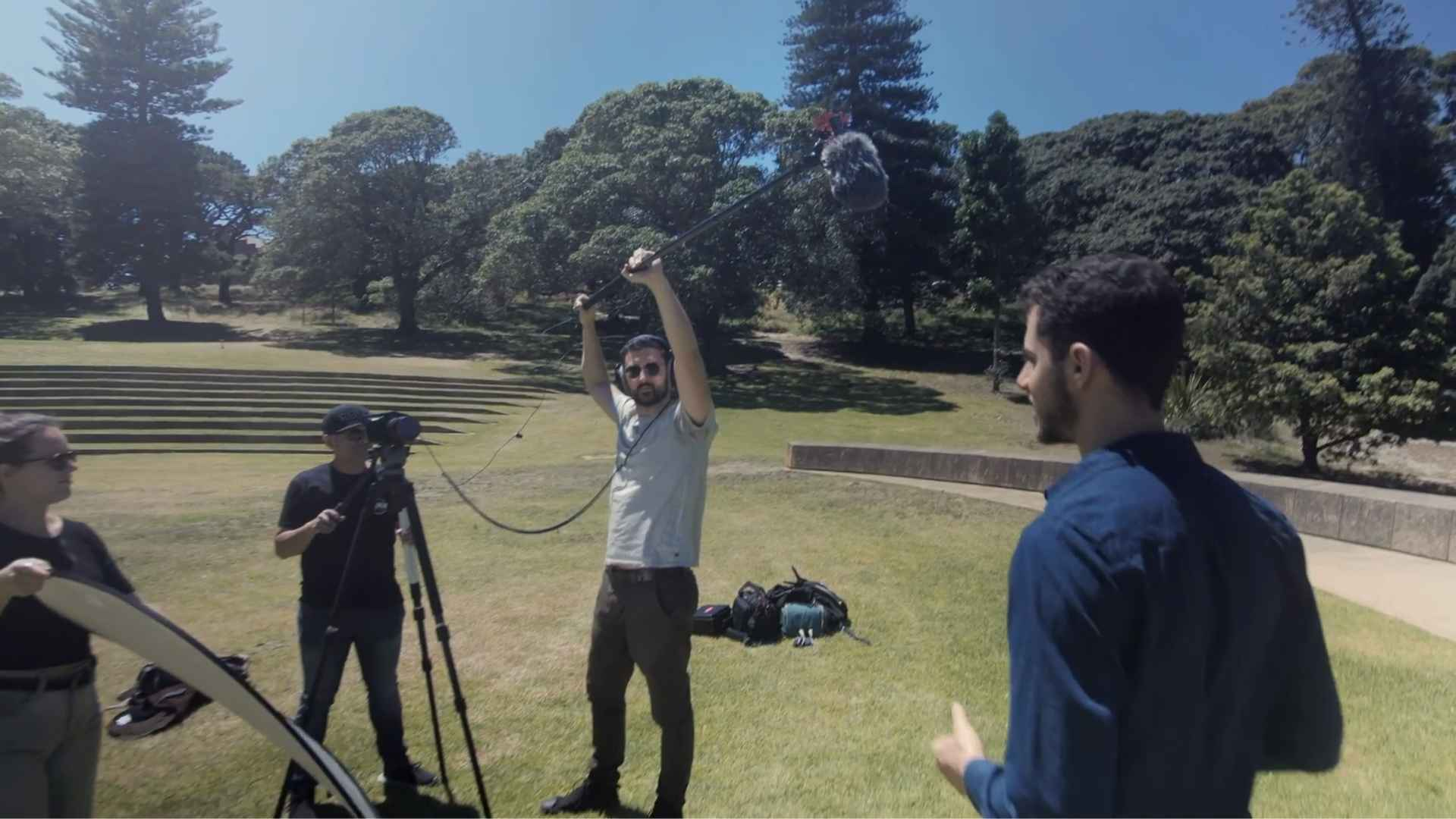
A long press of the upper button triggers the high-frequency boost, which can be used independently or in conjunction with the high-pass filters.
The purpose of this feature is to give a presence boost by amplifying higher frequencies by approximately +6dB. This is useful for bringing out the speaker’s voice in a noisy environment or countering any audio dampening caused by using a foam windshield or other wind-reducing accessories like a Deadcat.
Passive Attenuation Device (PAD)
The lower button serves as the power/function button, responsible for activating the power, PAD switch, and safety channel.
The -20dB PAD effectively reduces the microphone’s sensitivity to prevent potential clipping or distortions in noisy environments.

This feature is particularly useful when you have a second sound source and wish to record at a quieter level, like when you are recording an acoustic guitar to support vocals.
Safety Channel
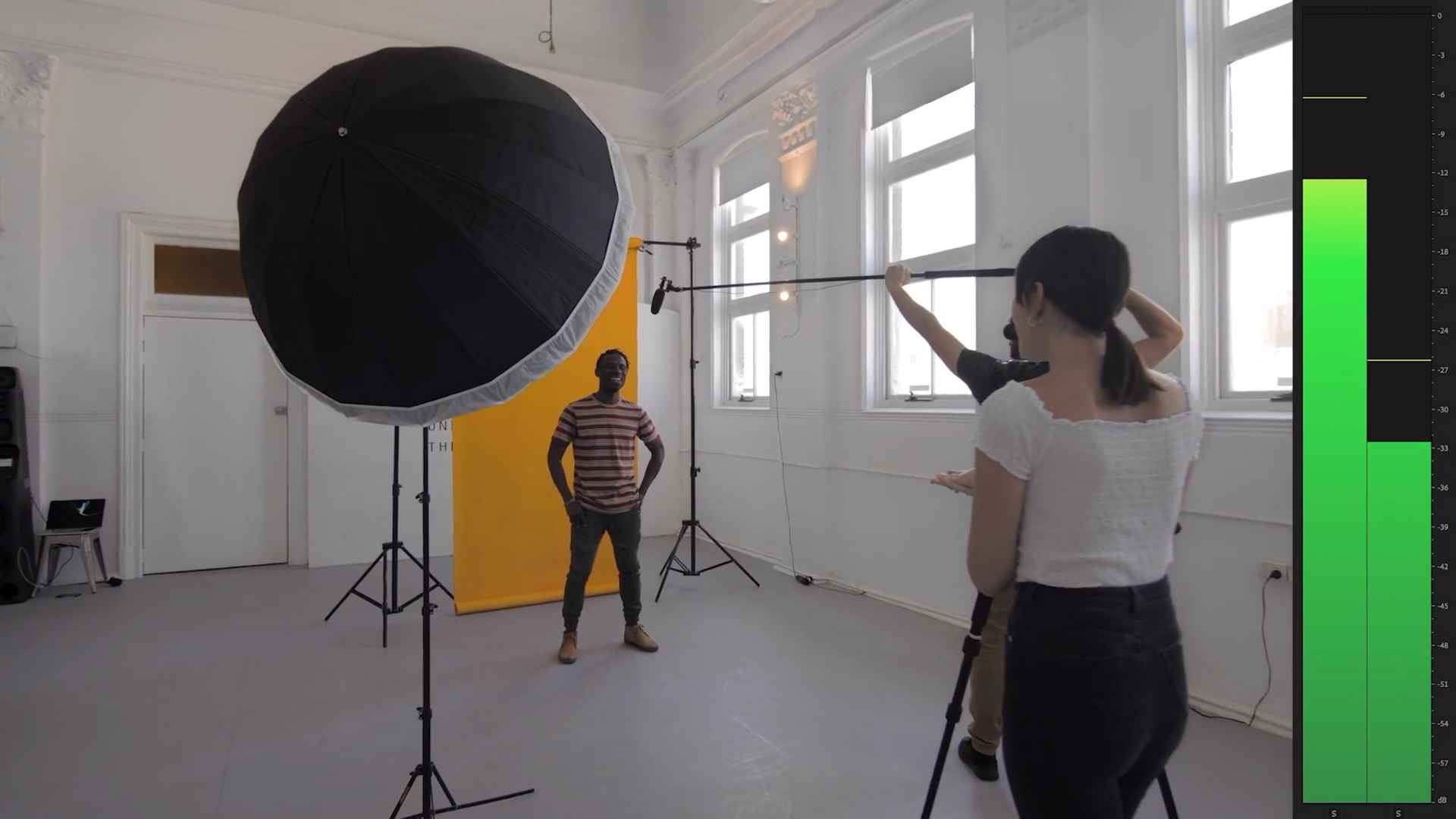
The safety channel on the Rode VideoMic NTG can be toggled with the power/function button (lower button). Similar to the EQ controls, you can choose to have the safety channel functioning by itself or simultaneously with the -20dB pad.
The safety channel is an ingenious feature that leaves you wondering how you ever lived without it and why other microphones haven’t caught on yet. I’m still in awe, to be honest, and trust me, this awesome feature will save you in tricky situations.
Imagine you’re out in the field, capturing stunning footage. There’s a chance of sudden loud noises bombarding your audio and spoiling your take. It’s enough to make any seasoned videographer break into a cold sweat. Or perhaps you’re editing your footage and stumble upon a section where the audio levels went off the charts, causing distortion on the primary track.
In those scenarios, you might find yourself having to invest precious time and effort in returning to the recording location for a second take of the footage.
However, with the safety channel activated, it simultaneously records a second ‘safety track’, 20dB lower, on the right channel. If the first track on the left channel experiences dreaded clipping, the second track on the right channel comes to the rescue with a usable signal. You can seamlessly cut between the two tracks, salvaging your precious audio. Genius, right?
Infinitely Variable Gain Control
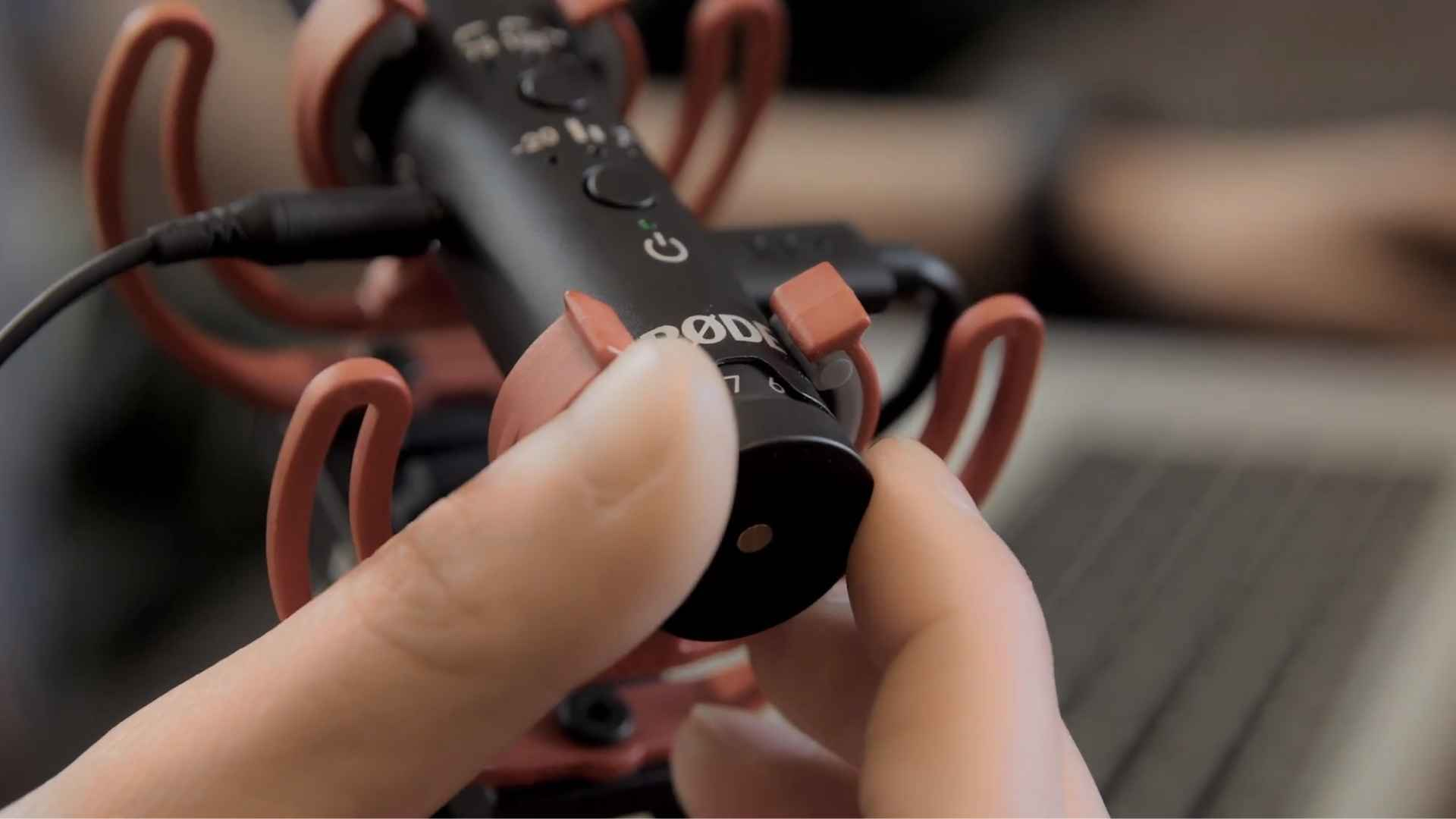
Having control over your gain settings is crucial. But options are often limited, especially when you’re using a shotgun mic with your DSLR or mirrorless camera. Your only choice is usually the camera’s digital preamp, which is far from ideal for optimal gain adjustments. You could use a wireless mic kit with an audio mixer or preamp, but that option is expensive and bulky.
The launch of the Rode VideoMic Pro in 2010 changed all of that with a gain switch, and videographers no longer have to depend so much on their camera’s digital preamp. However, the gain could only be adjusted in steps of 0dB, -10dB, and +20dB, which does not give much control.
This makes the infinitely variable gain control of the VideoMic NTG revolutionary. It is a gain knob on the back of the mic that gives you stepless gain control to fine-tune your recording levels from mic level to headphone level. This is made possible by the self-powered circuitry within the Rode VideoMic NTG. By harnessing the rechargeable internal battery, the mic is able to generate a significant amount of active output gain, eliminating the need to rely on a camera’s built-in preamps.
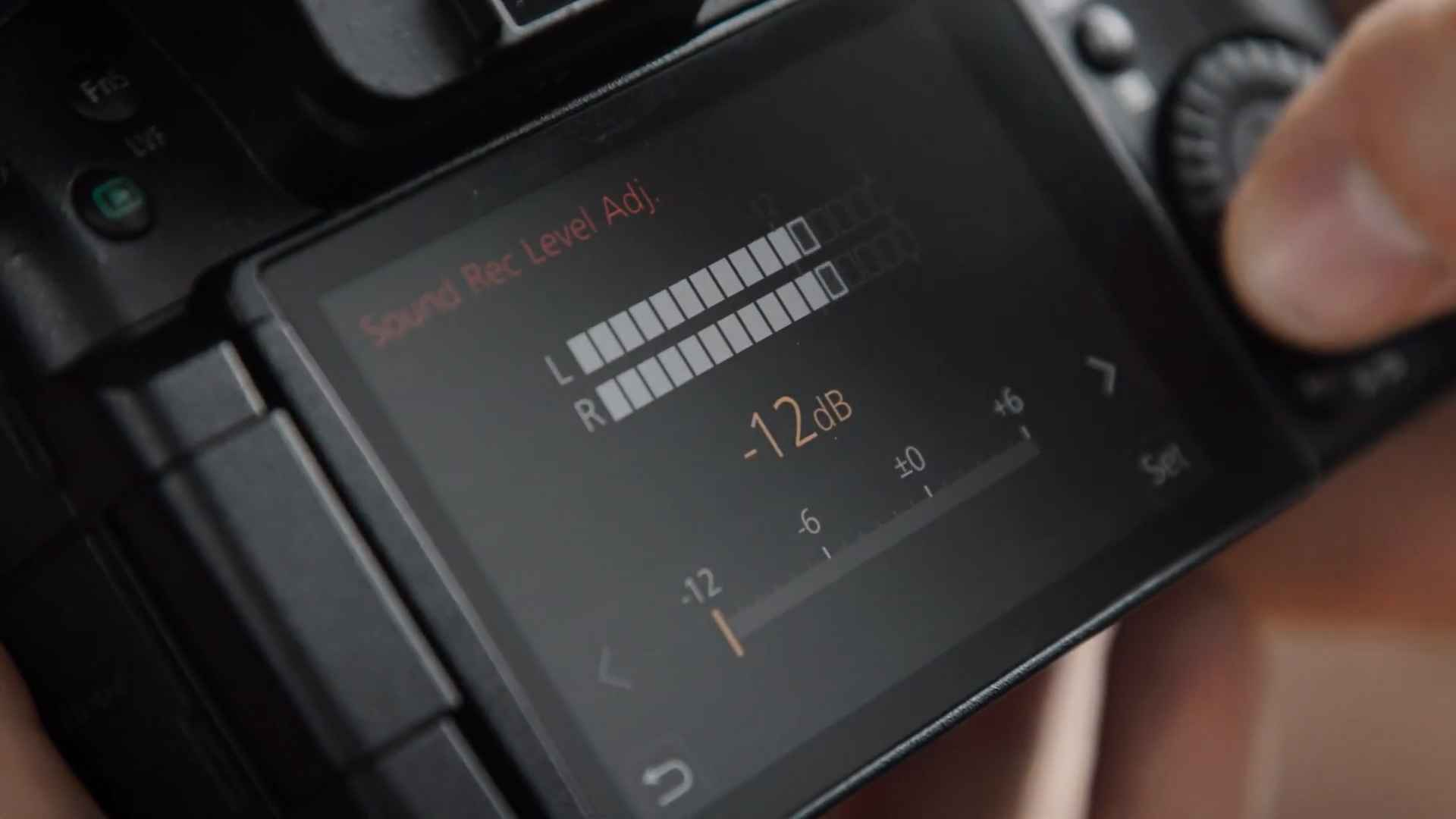
Say goodbye to the hissing noise caused by your camera’s digital preamp. By lowering the recording level of your mirrorless camera to zero, and turning off any audio presets like wind filter or attenuator, you can ensure a clean output signal and then effortlessly adjust the gain on the Rode VideoMic NTG to achieve the perfect audible level.

You have the power to adjust your gain on the fly, adapting to any audio scenario. Whether you’re capturing a whispered conversation or thunderous applause, the VideoMic NTG puts you in complete control.
dB Peak Warning Light
Another essential feature is the dB peak warning light, a red LED indicator next to the Safety channel indicator. This alerts you if your recording is too loud or at risk of audio clipping.
With a quick glance, you’ll know when it’s time to adjust your gain level or use the -20dB pad. It’s a straightforward yet effective way to ensure your audio remains clean and distortion-free.

Connectivity
In addition to being a hybrid microphone – both as a USB mic and a camera microphone, the Rode VideoMic NTG boasts a range of other impressive features through its 3.5mm jack and USB Type-C connection.
USB-C Connection
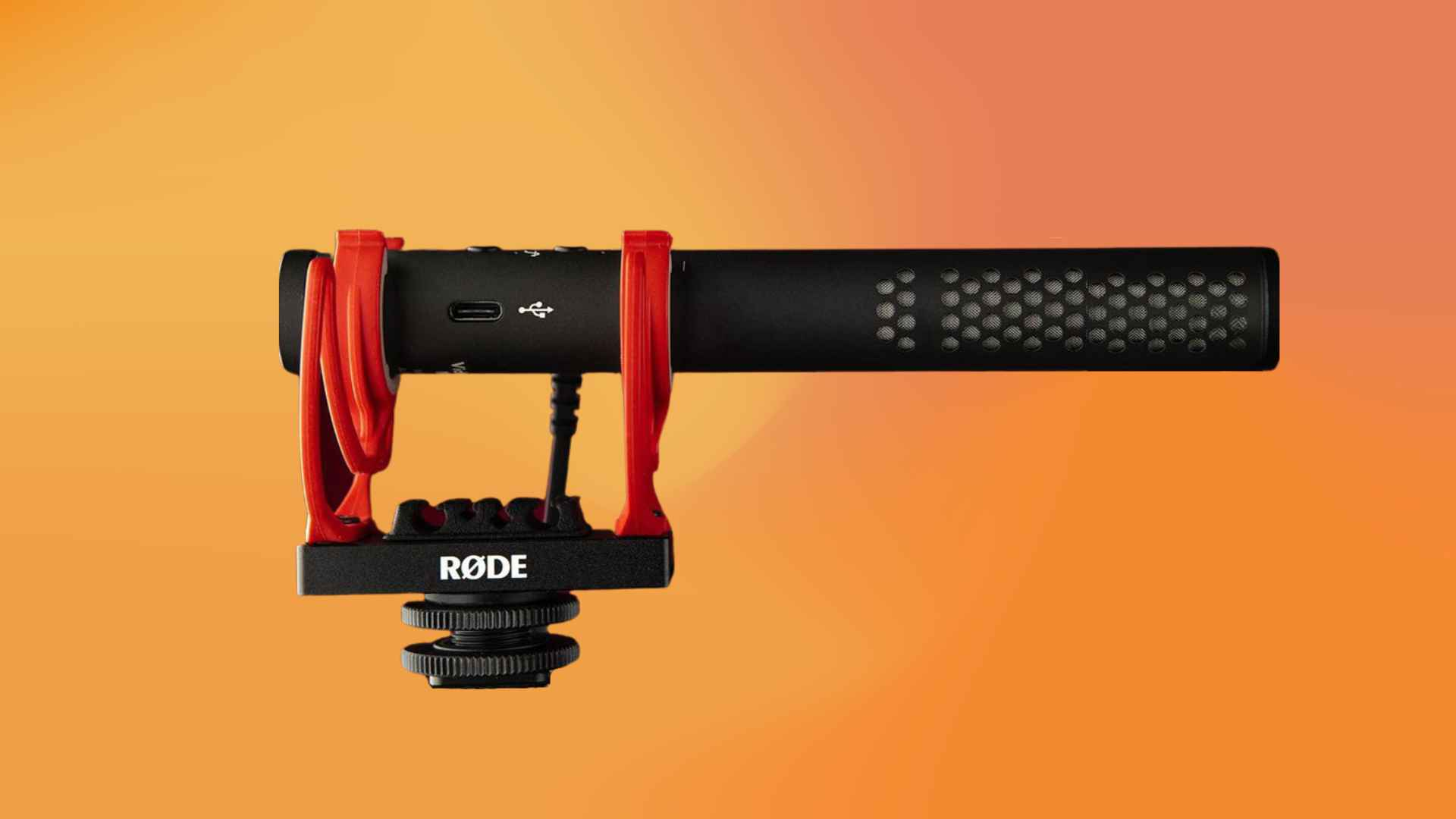
The Rode VideoMic NTG features a versatile USB-C port that offers seamless plug-and-play connectivity. With this convenient connection, you can effortlessly connect your USB microphone directly to your computer, Mac, tablet, or mobile device, allowing you to dive right into recording your podcast or live stream without any delays. Check out this article for other great microphones for podcasts and live streams!
Since the Rode VideoMic NTG USB mic comes equipped with its own built-in preamp and ADC (Analog to Digital Converter), you can save yourself from the hassle and expense of purchasing an additional audio interface or mixer. With this microphone, you have everything you need in one compact package, eliminating the need for extra equipment and saving valuable table space.

The USB-C port is also used for recharging the mic’s internal battery; you can use the provided USB-C to USB-A cable for that. It takes about 2 hours to fully charge the battery and should last about 30 hours on a single charge.
The only gripe I have is that the internal battery is not replaceable. While it would have been ideal to have a replaceable battery considering the natural degradation of rechargeable batteries over time, it’s worth noting that Rode offers a generous 10-year warranty on the VideoMic NTG.
3.5mm Microphone Output

You’ll be surprised how many features are packed into this mic’s 3.5mm output jack:
Auto-Sensing
First and foremost, the 3.5mm output on the Rode VideoMic NTG serves as a versatile connection point between the microphone and your camera.
However, the challenge arises from the fact that most cameras feature a 3.5mm TRS input, while mobile devices and tablets typically have a TRRS input. This difference often requires you to keep different cables and adapters, which is a hassle.
This is where the VideoMic NTG’s ingenious auto-sensing feature is such a game-changer that it eliminates the need for adapters or different cables. This intelligent feature detects the type of input it is connected to and automatically adjusts the mic’s output, whether it’s TRS or TRRS.
You can use the included SC10 cable with any device, enjoying seamless compatibility and eliminating compatibility concerns. If you plan to use the mic with newer iPhones that lack a 3.5mm headphone jack, you will need Rode’s SC15 or SC19 Lightning cable.
Auto-Power Feature

I think we can all relate to the frustration of recording long footage only to realize later that we forgot to switch on the microphone. Alternatively, going to a video shoot and discovering that the microphone had been left on, draining the battery completely.
This is where the brilliant auto-power feature of the Rode VideoMic NTG comes into play. The microphone automatically switches on or off when connected or disconnected from a camera, guaranteeing you won’t encounter the issues mentioned above.
Headphone Monitoring

When the Rode VideoMic NTG is being used as a USB mic with its USB Type-C port connected to a smart device, the 3.5mm jack doubles as a headphone jack, giving you zero-latency monitoring. The mic’s gain knob then becomes the control for adjusting the headphone volume.
However, if you are connected to a camera using the mic’s 3.5mm jack, the only way to connect your headphones is by using the camera’s headphone jack.
Verdict
External microphones have long been recognized as superior to the built-in mics of mobile devices, DSLRs, and mirrorless cameras. However, there has always been a compromise between portability and professional-grade sound quality.
On-camera mics like the Rode VideoMicro offer decent audio but lack a polished, broadcast-quality feel. Meanwhile, professional shotgun mics like the Sennheiser MKH 416 are bulky and require additional equipment like the Comica CVM-AX3 DSLR audio mixer for XLR to 3.5mm TRS conversion and phantom power.
Finding a good shotgun microphone that combines the best of both worlds has been a rarity—until now. The Rode VideoMic NTG is a game-changer, providing studio-level sound quality effortlessly while retaining the convenience and easy connectivity of an on-camera and USB microphone.

Those attributes alone make the Rode VideoMic NTG a top contender, but Rode doesn’t stop there. They have incorporated numerous game-changing technologies into the VideoMic NTG, making its price point of $250 seem too good to be true.
The Rode VideoMic NTG is so versatile that it can be used for a wide variety of applications and content creation ideas. But if you don’t know where to begin, here are some great content ideas to get you started using your VideoMic NTG!
If I am given only one microphone to use, I know what my choice will be. When it comes to a do-it-all microphone that can handle any application, the Rode VideoMic NTG is undoubtedly the one to rely on.
Production Information
Specifications
- Polar Pattern: Supercardioid
- Transducer Type: Pressure gradient electret condenser
- Power Requirements: Internal batteries
- Frequency Response: 35 Hz to 18,000 Hz
- Sensitivity: -26 dBV/Pa (50 mV/Pa) @1kHz
- Max SPL: 120 dB
- Output Connection: 3.5 mm auto-sensing, USB-C
- Weight: 94g
- Dimensions: 21.6mm diameter, 171mm length
- Accessories: SM7-R Rycote Lyre shock mount, TRRS to TRRS cable, 3.5mm to USB-C cable, 3.5mm to lightning cable, windshield
Features
- Internal rechargeable battery with 30+ hours of audio recording
- Infinitely variable gain control knob
- Auto-sensing output
- Automatically switches on/off when connected to the camera
- Safety channel for recording a second track at -20db
- 3.5mm jack doubles as a headphone jack in USB mode
- -20db pad, 75Hz and 150Hz high-pass filter, and high-frequency boost
- Updateable firmware through Rode Central

Rode VideoMic NTG










